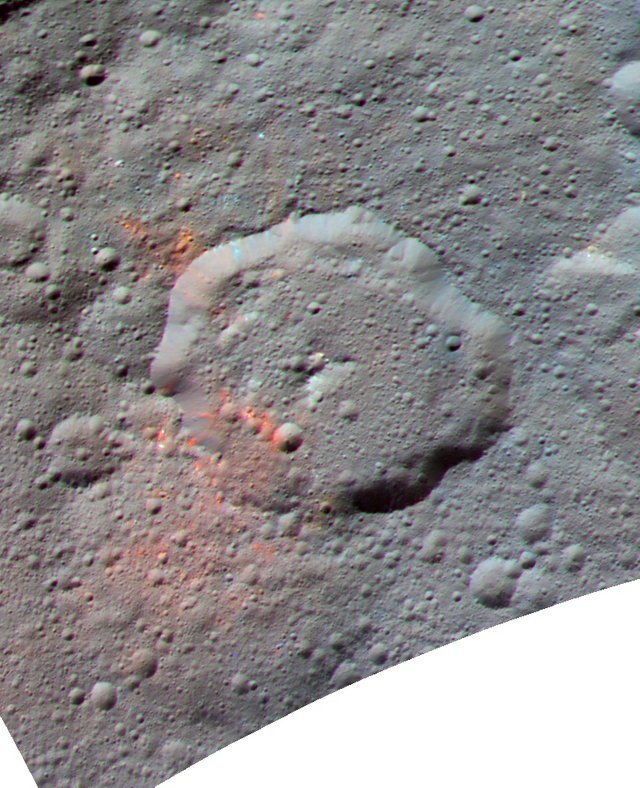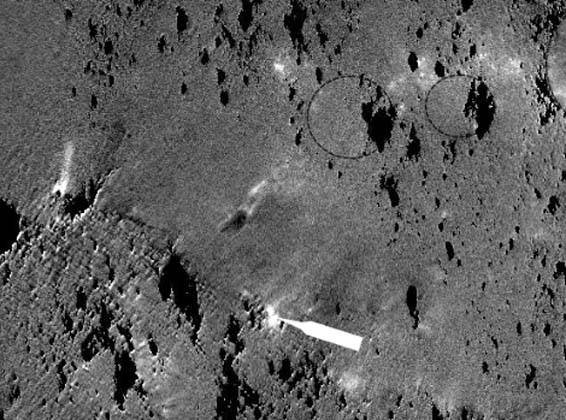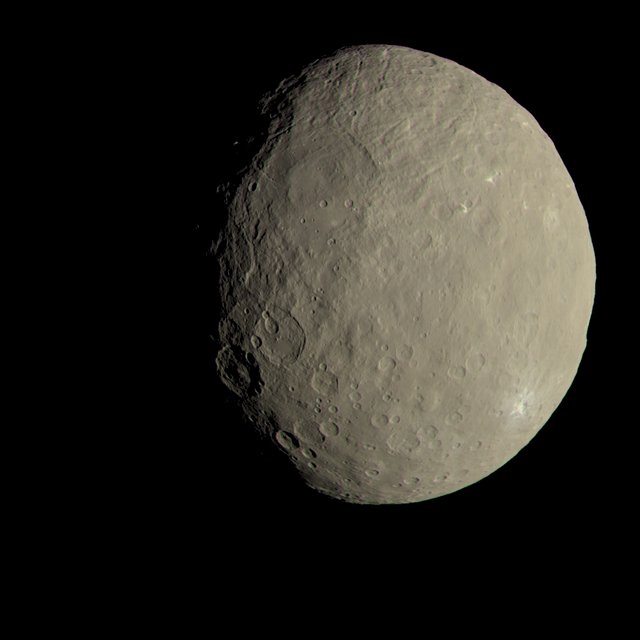New discoveries from NASA Dawn mission, orbiting dwarf planet Ceres in the Main Asteroid Belt. Spacecraft's sensors found evidence for organic material on the surface. While Ceres composition has many common with meteorite group called carbonaceous chondrites, this is first time when organic material is found on the Main Belt bodies. This is 52 kilometers-wide Ernutet crater:

Image: NASA/JPL-Caltech/UCLA/MPS/DLR/IDA Areas with high organic content marked with orange and red
Dawn's spectrometer cannot define exact composition of organics, but evaluations show that total organics content is from 4% to 9%.

Image: ISRO Conference annotations Composite image of Ernutet crater rim. Bright white areas (arrow marks one of them) - zones of high organics content. Resolution - 35 meters per pixel
Another organic-rich area is found in a very small area in Inamahari Crater, about (400 kilometers) away from Ernutet.

There are two possible ways for how organics found its way to Ceres: it could be brought by meteorites or comets (comets cores show organic material signature), or it is produced at place.
Authors of new article, published in Science magazine tend to the second way. They say that impact would rather destroy organic.
In its two years mission, Dawn has already found ammoniated clays, multiple salt deposits and carbonated minerals on Ceres surface. These findings clearly indicate complex geological processes with liquid water in the past, maybe even prebiotic chemistry.
Meanwhile, Dawn mission continues. On February 23 it will alter its orbit to about 20 000 kilometers above Ceres from present 7520 km x 9350 km, and will change orbit inclination. In the late Spring Dawn will image Ceres with Sun behind, so images will be of the best quality.
Dawn is the only mission which after orbiting one Solar System body, left its orbit and went to another: before Ceres it explored Vesta - another asteroid. This journey became possible only with help of ion propulsion thrusters: